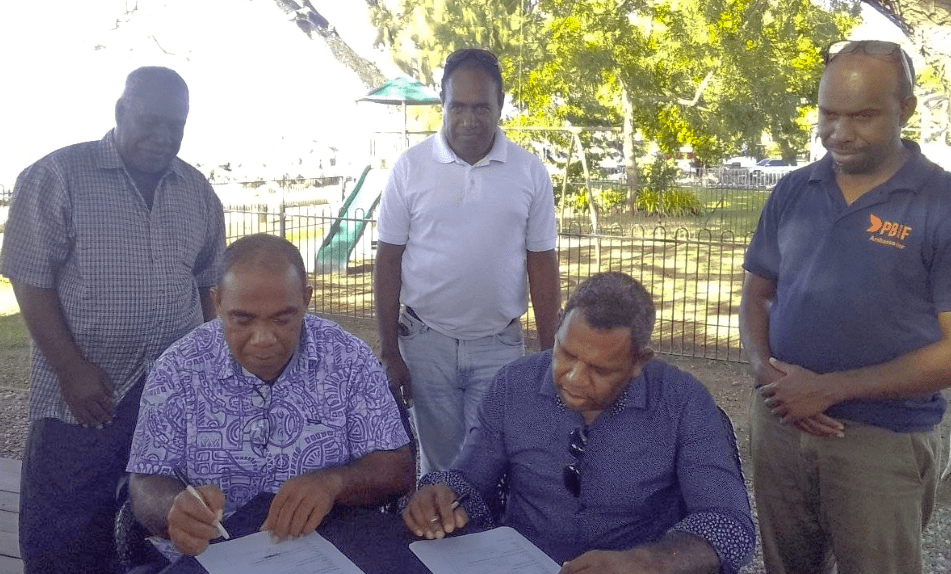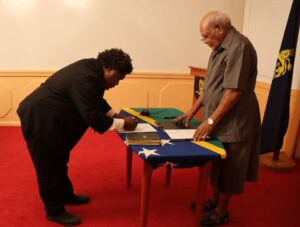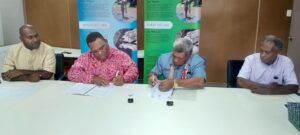WHILE the Tina River Hydropower Development Project is a national priority set to deliver many benefits to the people of its islands, the project area, located on the Tina River tributary of the Ngalimbiu river, 30 kms north of Honiara is considered an area of high biodiversity as well as area of indigenous cultural significance.
As a result, the Solomon Island Government (SIG) have been working tirelessly on its many obligations, including developing strategies through community consultation and seeking expert technical advice, that will eventually lead to a management plan for the upper catchment.
Like any other infrastructure project of this size and scale, Tina has the potential to impact terrestrial and aquatic biodiversity values. In recognition of this, significant work has gone into planning the protection of the Tina upper catchment area and supporting the implementation of necessary agreements. The suite of plans which deal directly with biodiversity aspects of the project, namely the recently approved Biodiversity Management Plan (BMP), the Terrestrial Offset Management Strategy (T-OMAS) and the Aquatic Offset Management Strategy (A-OMAS) are now in place to specifically advise on how to manage the majority of these impacts via the implementation of the mitigation hierarchy.
The plans and recommended strategies will also assist in the ongoing management of the upper Tina River catchment which is of vital importance for now and the future. Its ongoing implementation will result in a net gain of biodiversity values and contribute to broader benefits including protection of areas of Solomon Islands Rainforest, parts of the Guadalcanal Watershed Key Biodiversity Area, and remaining Critical Habitat.
To date, SIG has taken numerous steps to meet its obligation including the participation in a Project Financiers meeting in Sydney in January 2023, the development an Upper Catchment Stakeholder Engagement and Communication strategy and the creation of an Inter Ministry Memorandum of Understanding (MOU) which will ensure protection of the Upper Catchment by withholding permits for industrial activities in the area.
The Ministry of Mines, Energy and Rural Electrification (MMERE) also signed an MOU with local NGO, Island Knowledge Institute (IKI), to prepare the strategies for the implementation of the Upper Catchment protection.
Permanent Secretary, Chris Vehe said “the purpose of the MOU is to foster a partnership through cooperation in the protection of the Tina Hydro Project water catchment by collaborating with indigenous traditional ownership of the area and create mutually agreed programs.” He goes on to say, “IKI will seek to work with indigenous traditional owners of areas in the catchment to reclaim their place, traditional use, and manage the area for their benefits while at the same time, achieving protection of the upper catchment from extractive commercial activities such as logging and mining.”
The Government is confident that the planned steps will result in achieving protection of the Tina catchment from commercial logging, mining or any other extractive activities that will reduce the bio-diversity value of the catchment.
And while there remains a need for offset on terrestrial as well as aquatic flora and fauna, it is a requirement that forms part of the Project’s financing agreement with the Solomon Islands Government (SIG). As well as meeting the Project Financing Agreement, meeting this need also ensures the Solomon Islands gets a successful renewable energy project while at the same time, preserving indigenous culture and bio-diversity values. The work is set to commence in early 2024 with IKI to lead and coordinate the indigenous terrain mapping (ITM)program of the Tina upper catchment, as well as and provide the technical oversight and management.
Source: Tina River Hydropower Development Project




